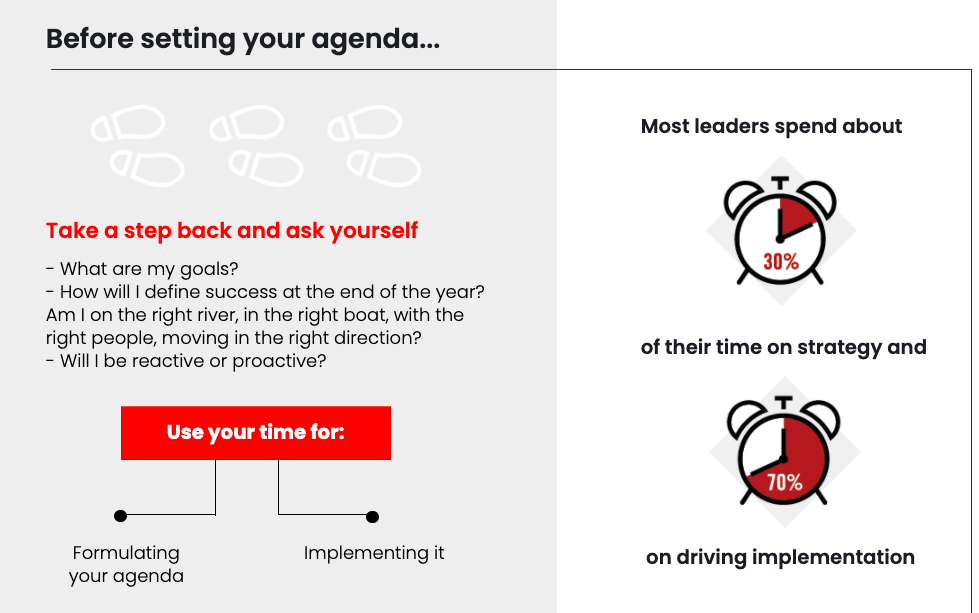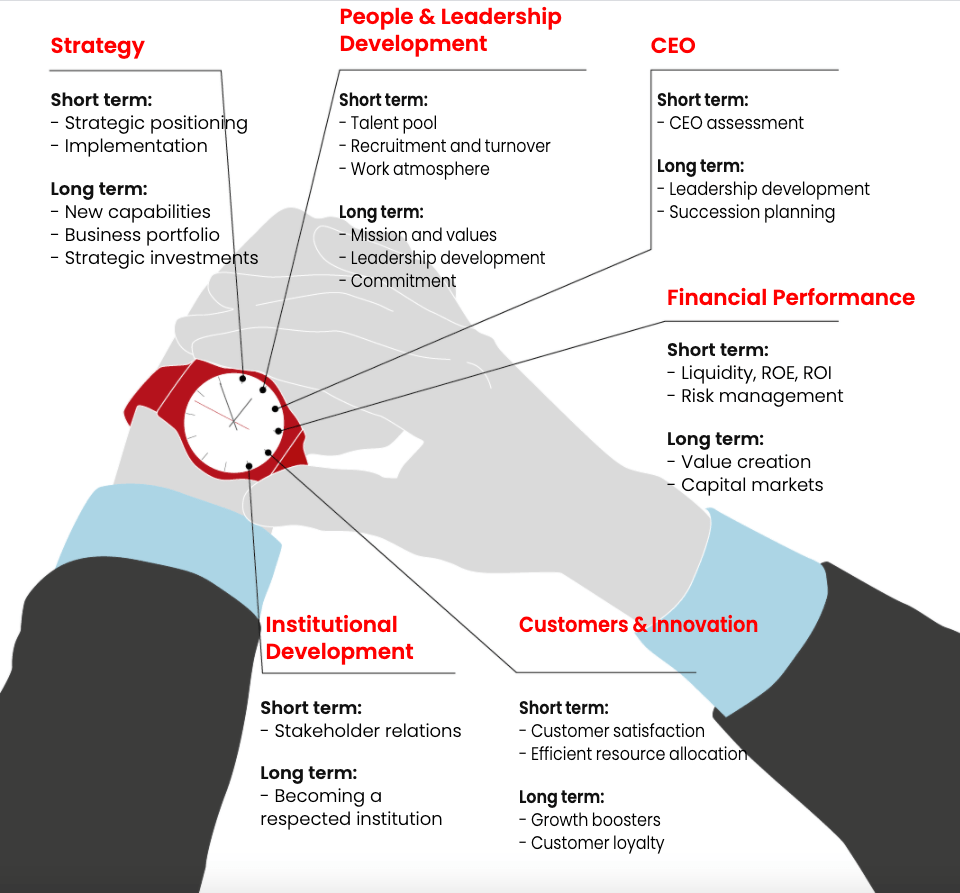High-achieving professionals like you juggle a multitude of demands from your own department and beyond. That makes managing your time well and setting your priorities fundamental to achieving your goals as a leader.
Here are some tips for determining what can’t be missing from your calendar and how to improve your organizational skills.
Tips on setting an executive agenda

Ask yourself some questions
Before you begin work on your agenda, consider what you want to accomplish with it. What are your goals? How will you judge, at year’s end, whether you were successful in reaching them? Are you heading in the right, proactive direction toward success?
Now think of the steps you can take in two different areas: designing your agenda and implementing it. Here’s a helpful tip for you based on analysis of business leader agendas: they consistently spend about 30% of their time on developing strategies and 70% of their time following them.
What must a CEO agenda include?

Strategy
This includes both your short-term strategizing, specifically its positioning and implementation. Long term, consider your business portfolio and investments.
People & Leadership Development
The focus on your employees spans the early stages of analyzing recruitment practices to, eventually, molding future leaders and solidifying employee commitment to your organization.
CEO
You’ve also got to think and plan like a CEO, starting with self-assessments and running all the way through your succession planning.
Financial Performance
The financial portion of your agenda planning will center on analyzing your firm’s ROI and liquidity, risk management, value creation and getting to know the markets.
Customers and Innovation
First, pay attention to customer satisfaction with your company and keep on eye on efficient resource allocation. Then examine ways to boost customer loyalty and other growth boosters.
Institutional Development
This agenda item first focuses on your stakeholder relations before considering the long-term matter of helping make your company a respected institution.
6 tips for managing your time like a CEO
1. Own your schedule, and don’t let people arrange meetings for you via online calendars.
2. Organize your time, not your work.
3. Schedule “buffer zones” between meetings that will let you analyze meeting content and give room to handle unexpected events.
4. Set aside two hours each week for quiet self-reflection on the issues you’re currently facing and the progress you’ve made.
5. Avoid multitasking. It’s important that you give people your full attention, even if only for a limited time.
6. Take a course or training workshop every five years. Read relevant news, but focus on making news.
A program like the IESE Global CEO Program helps CEOs like you better grasp the knowledge, mindset, skills and capabilities needed to lead your company to the next level of excellence. Another option is the Advanced Management Program (AMP), which exposes you to the latest trends, ideas and concepts shaping global business.
And IESE’s other Executive Education programs cover a wide range of formats and topics that will improve your leadership skills and help you become the best leader for your team and company.

















